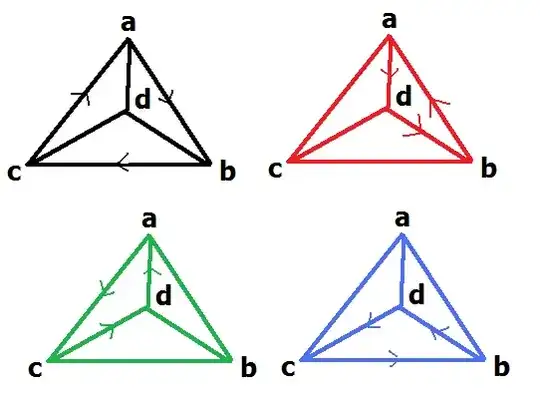Recall that a quasigroup is a pair $(Q, \ast)$, where $Q$ is a set and $\ast$ is a binary product $$\ast: Q \times Q \to Q$$ satisfying the Latin square property, namely that for all $x, y \in Q$ there is a unique $a \in Q$ such that $y = ax$ and a unique $b \in Q$ such that $y = x b$, or equivalently, that the multiplication table of $\ast$ is a Latin square. A quasigroup $(Q, \ast)$ is a loop iff it has an identity element, that is an element $1$ such that $1\ast x = x = x\ast 1$ for all $x \in Q$.
This question asks about constructing a loop $(L, \ast)$ on a set $L$ of five elements (denote $L = \{1, a, b, c, d\}$) that satisfies the involution condition $x^2 = 1$ for all $x \in L$. My answer there shows that there is only one such loop up to isomorphism; its multiplication table is: $$ \begin{array}{c|ccccc} \ast & 1 & a & b & c & d \\ \hline 1 & 1 & a & b & c & d \\ a & a & 1 & c & d & b \\ b & b & d & 1 & a & c \\ c & c & b & d & 1 & a \\ d & d & c & a & b & 1 \end{array}.$$ This operation is nonassociative, as $(ab)d = a \neq ac = a(bd)$, but the fact that every element squares to $1$ implies that it is power-associative; in fact it turns out to be flexible.
Even without the involution condition, this example is minimal in the sense that any loop of order $< 5$ is in fact a group. Up to isomorphism there are $6$ loops of order $5$: This loop, the group $C_5$, and $4$ other non-groups (the other $4$ are not even power-associative).
So, given that this example is both minimal and unique, it's natural to ask:
Is there a more informative/interesting way to view the loop structure $\ast$ on $L$ than via its multiplication table? That is, does it arise naturally in some other setting?
